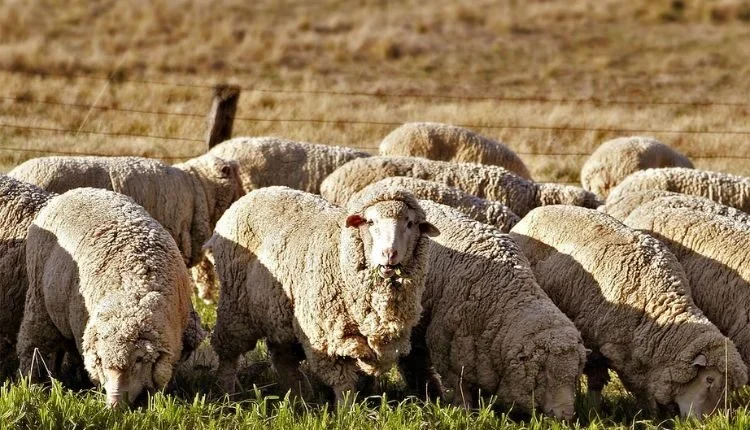Gerol breed: This tribal woman farmer became an example by adopting scientific techniques of sheep rearing
Gerol breed: Sheep and goat rearing is the main means of livelihood for poor farmers, because the cost is also low and the profit starts coming quickly. Tribal farmers of Sundarban are also improving their standard of living by sheep and goat rearing. Aarti improved her financial condition by adopting scientific techniques of sheep rearing.
Scientific techniques of sheep rearing | The life of tribal farmers living in the Sundarban area of West Bengal is very difficult, they do not have enough land for farming. In such a situation, they keep looking for other options to earn a living. Sheep and goat rearing is a good option for these farmers, it gives them a means of permanent livelihood.
What is the benefit of sheep?
If a farmer has a little land on which fodder can be grown, then there is no need to spend anything on feeding sheep and goats. Sheep are raised for milk, wool and meat.
Specialty of Gerol sheep
There are many breeds of sheep, but Gerol sheep are found more in Sundarban area. Their size is small and they are specially reared for meat. Sundarban’s tribal woman farmer Aarti Mandi Hembram is also rearing sheep of this breed and now she is inspiring others by becoming a successful sheep rearer.
Sheep of Gerol breed are small in appearance. Their body weight is medium which is relatively less than heavy breed sheep. Gerol breed has a body with small head, medium ears and short thin tail. The average weight of adult male is 15 kg and the average body weight of female is 13.7 kg.
Training before starting sheep and goat rearing
Gosaba block of Sundarban is surrounded by river and forests. Aarti Mandi Hembram is a resident of Nafarganj village of this area. She has only 2 bighas of land and it was very difficult for Aarti to manage the expenses of her family of 6 people, but after participating in many training programs organized by Biotech Kisan Hub, Aarti’s difficulties started reducing.
Aarti Mandi started scientific sheep and goat farming based on the information and technical skills received in the training and from here her life changed. Along with secure livelihood, she started getting permanent income.
Information on scientific techniques of sheep farming
During the training, Aarti Mandi was given information about first aid of sheep, living arrangements, overall management, diet, common diseases and their treatment as well as deworming and vaccination. Along with this, information was given about scientific techniques of rearing Gerol breed of sheep. This helped Aarti a lot. She was given 3 Gerol sheep and a ram. Apart from this, she also bought 4 cows from the local market.
She was also given inputs like vaccination, health care, animal feed and mineral supplements by Biotech Kisan Hub. In tribal areas like Sundarban where farmers do not have technical knowledge, Biotech Kisan Hub is providing them quality animals.
Solved the problem of sheep marketing
Aarti has become a progressive woman farmer of her area. She has 16 Gerol sheep and one ram. Along with becoming a successful entrepreneur, she also got respect in the family and society. Not only this, by selling Gerol sheep, she also bought 1 bigha of land in the village. Now she has also become a member of the Farmers Producer Organization, which solved the problem of sheep marketing. Along with scientific technology of sheep rearing, she is also doing farming.
Farm became a model for sheep and goat rearing
Aarti participated in many training programs organized by Biotech Kisan Hub and also took advantage of other facilities provided by them, due to which she has become a successful sheep rearer in a short time. Other farmers and students of the district come to visit her model farm. Seeing her success, other farmers are also coming forward for sheep and goat rearing.
Management Practices of Gerol Breed Sheep
Most marginal farmers and landless labourers rear Gerol sheep. The size of Gerol sheep flock varies between 2 to 27. However, most farmers keep small flocks ranging between 3 to 5. Sheep are raised to graze in common land, natural grasslands along dams and roads and near water sources. Mostly women and children are involved in sheep rearing.
Most of the fields are flooded during the rainy season. Gerol sheep have the ability to swim and graze in marshy land at knee-deep condition. Usually sheep are not provided with separate houses and are kept with cattle. Some farmers believe that sheep and goats do not survive well together. Therefore, they either rear cattle and sheep or cattle and goats. However, some farmers rear both sheep and goats. During the day, a peg is put in front of the house or on the roadside for the sheep.
Important things related to the Gerol breed
Gerol breed sheep are mainly found in grey and white colour. More than 90 percent of the sheep are white and the remaining 10 percent are brownish black. Males are usually horned. The weight of Gerol sheep at birth is about 1 kg. The udder is quite well developed and twins can be easily raised on the milk available from the sheep.
The wool in the Gerol breed is open and very thick. The wool cover on the coat is not dense but covers almost the entire body and a large part of the legs. Usually farmers do not shear the wool of their animals and use them only for meat.
Contact us- If farmers want to share any valuable information or experiences related to farming, they can connect with us via phone or whatsApp at 9599273766 or you can write to us at [email protected]. Through Kisan of India, we will convey your message to the people, because we believe that if the farmers are advanced then the country is happy.



